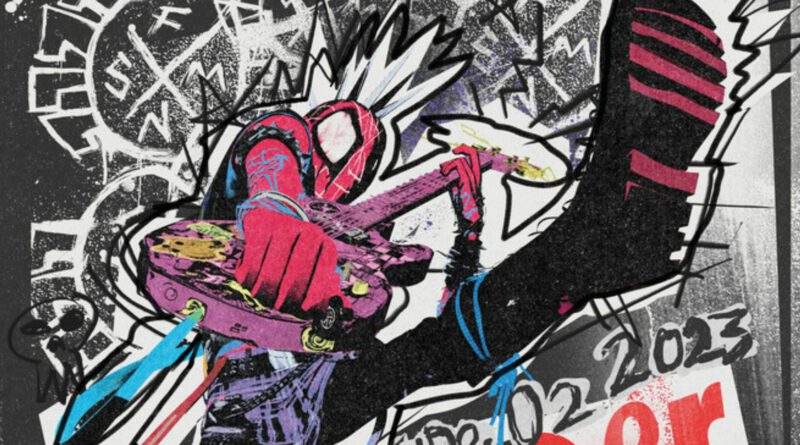Spider-Punk is the real hero of ‘Spider-Man: Across the Spider-Verse’
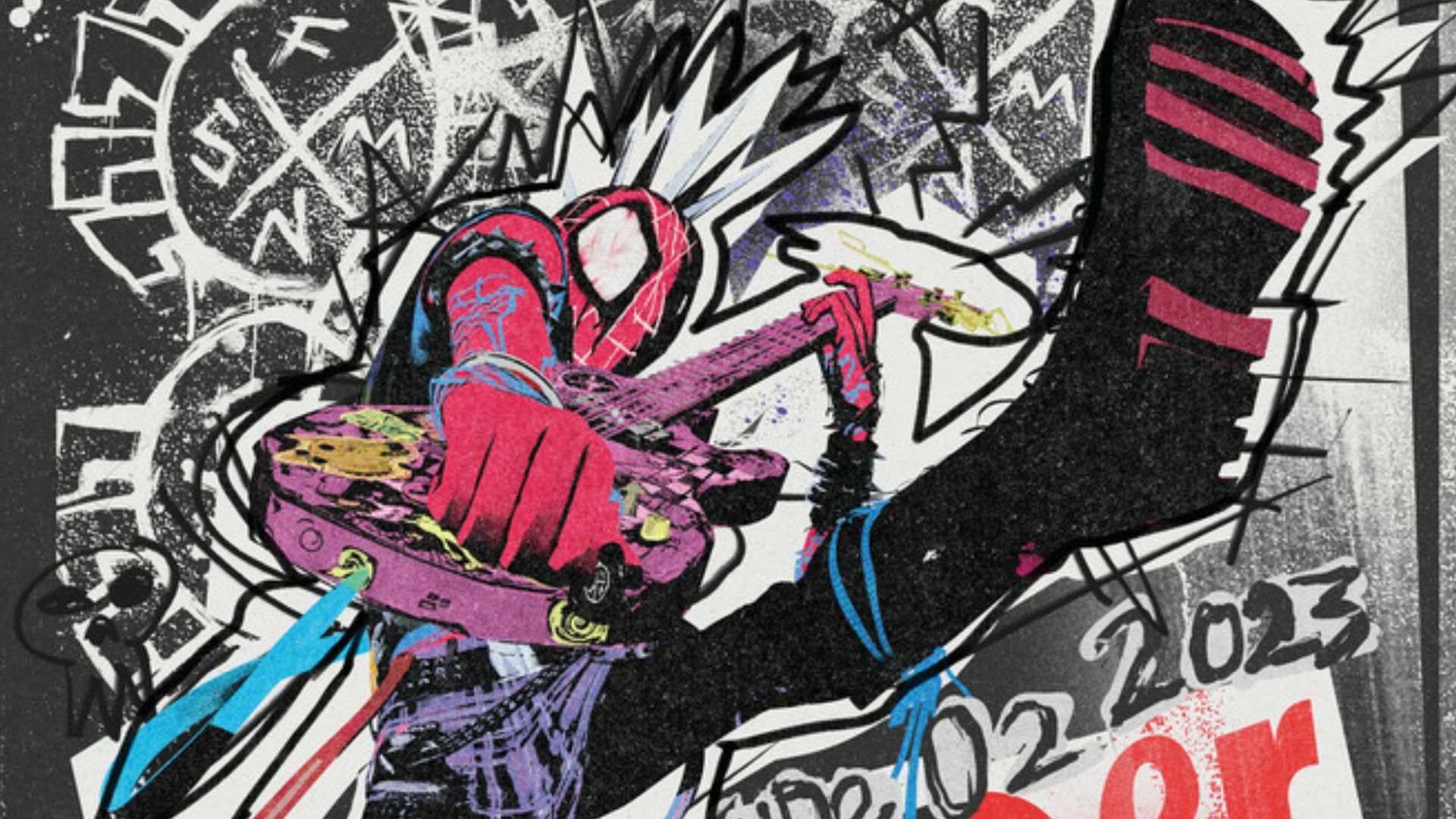
Spider-Man: Across the Spider-Verse is a stunning follow-up to Spider-Man: Into the Spider-Verse. What executive producers and writers Phil Lord and Chris Miller created with directors Kemp Powers, Joaquim dos Santos, and Justin K. Thompson is nothing short of spectacular.
According to Miller, the 240-plus characters in this Spider-Verse sequel were created by over 1,000 artists, some of whom had been on the project for several years. And yet, even among an enthralling swarm of Spider-Folk, there’s only one character that I couldn’t stop thinking about: Spider-Punk, aka Hobie Brown, who is voiced by Oscar-winner Daniel Kaluuya.
Yes, Spider-Man 2099, aka Miguel O’Hara (Oscar Isaac), was intense. Spider-Woman, aka Gwen Stacy (Hailee Steinfeld), was heart-wrenching, and that Miles Morales (Shameik Moore) cliffhanger was mind-snapping. But something about Spider-Punk spoke to me.
A British punk political activist, artist, musician, and one-time runway model, Hobie Brown wields his guitar like Paul Simonon throws his bass. Within Miguel O’Hara’s carefully built Spider-Society, Spider-Punk is an outlier, sidestepping the rules of the multiverse to do what he wants. Hobie regularly fades into the background, quietly planting the seeds of rebellion, specifically within Miles, never really showing his hand until after he’s gone. Hobie’s chaotic nature is a feature, not a bug, and it’s pulled directly from his comic book origins.
Of course, it’s not just his explosive guitar riff entrance, anti-establishment rants, or even his nostalgic punk rock poster redesign that makes Spider-Punk stand out. His influence on Miles and the subtle trajectory of the plot because of these character details is makes Hobie Brown one of the most influential characters of Across the Spider-Verse.
Who is Spider-Punk?
In 2014, Spider-Punk was first introduced in Marvel Comics in The Amazing Spider-Man Volume 3 #10 by writer Dan Slott and artist Olivier Coipel. This was three years after Brian Michael Bendis and artist Sara Pichelli brought us Miles Morales in Ultimate Comics: Fallout #4. So, canonically, Spider-Punk is a newer character. However, biologically, he’s older than Miles, and on Earth-138, Hobie has seen and been through much more.
According to comic book lore, Hobie was living on the streets when he was bitten by a spider exposed to radioactive waste. A self-proclaimed Spider-Man in his universe, Hobie is staunchly anti-establishment and will curse out his enemies while he beats the crap out of them with his guitar. The 2022 update of the character saw him regularly beating racists and fascists with the instrument.
At one point, Spider-Punk led a revolution against a tyrannical government led by the corrupt United States President Osborne, who ruled with a symbiote-infected Thunderbolt Army. A symbiote’s weakness is sound, and Spider-Punk had that in spades. He defeated his enemies with the loudest guitar riff ever played and ended the song by smashing Osborne over the head with the guitar. While Hobie’s badass origins were not in Across the Spider-Verse, his powers and attitude did make the leap to the big screen.
Spider-Punk comes with the standard set of Spider powers, including superhuman strength, agility, speed, web shooters, wall-clinging, and a genius intellect. But Hobie is also a musician and an artist, characteristics shared by two other characters in Spider-Man: Across the Spider-Verse: drummer Gwen Stacy and graffiti artist Miles Morales, who Hobie has the most influence over. More on that in a minute.
In the comics, Spider-Punk was a pretty big part of the Spider-Geddon storyline on which part of the Spider-Man: Across the Spider-Verse is based. However, Lord and Miller, who co-wrote the screenplay with David Callaham, leveled up Hobie Brown for the film in more ways than one.
Hobie destabilizes the Spider-Verse.
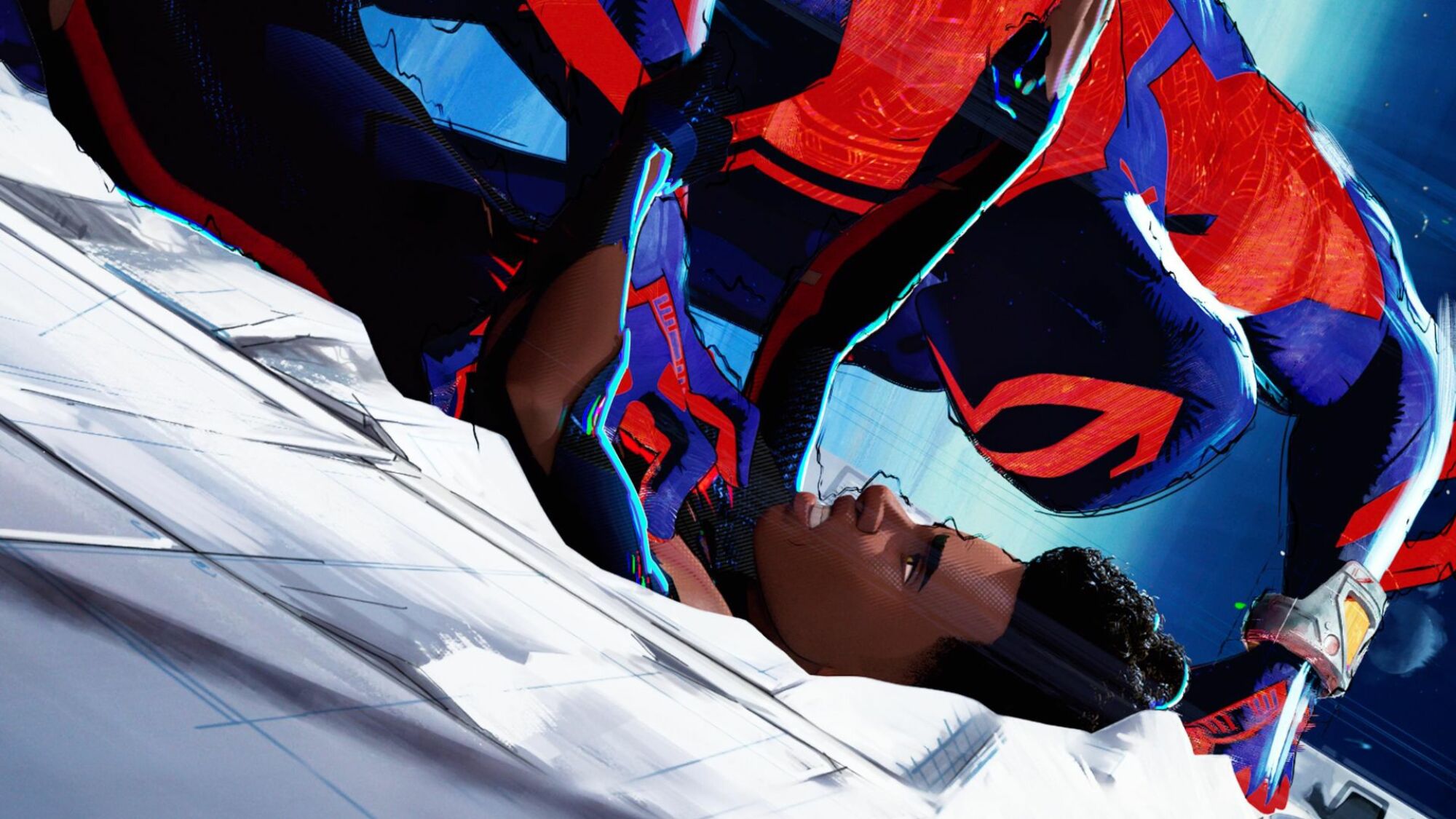
Long before Hobie blazes onto the scene in Across the Spider-Verse, we hear about him through Gwen, who is quite taken with him. (She’s even “crashed” in his dimension sometimes, leaving behind her jumper and toothbrush.) Initially, Miles is jealous, feeling a bit of competition with this mysterious Spidey stranger. But that’s before Spider-Punk blasts through the walls of Alchemax in Mumbattan to help save Gwen and the team. Part Basquiat, part Bad Brains, Hobie Brown appears as a collage of animated overlapping, faded band posters, refracting moments of color only when light directly hits him. Plus, he’s even cooler without his mask on, a point that Miles laments aloud.
“Spider-Punk was a perfect counterpoint to sort of what Miguel is trying to do,” Lord said in a recent interview with Rotten Tomatoes, “We wanted him to look like a punk zine.” And it just so happens that Kaluuya was born and raised in the Camden Town section of London, one of the birthplaces of punk.
Kaluuya’s voice performance as Hobie captures not only the musical Cockney slang that comics can’t truly express but also the essence of the anarchist spirit of that era’s punk ethos. Hobie is layered, not just in his character design but in his very nature.
Hobie observes more than he speaks, and he’s very direct when he does. For instance, Hobie is the one who holds Gwen responsible for not telling Miles about his “role in all this” at Spider Society. Hobie may be the first to declare he is not a role model. Nonetheless, he’s soon showing Miles how to use his electrical powers properly. He’s straightforward with Miles and challenges the young man’s naïveté and need for acceptance, but he’s also trying to urge Miles think for himself. By antagonizing O’Hara on his home turf, Hobie reveals a glimpse of a darker side of the head Spider-Man, which Miles gets up close and personal with in the third act.
Hobie is precisely who and what Miles needs, exactly when Miles needs him.
Hobie Brown steps in where Uncle Aaron left off.
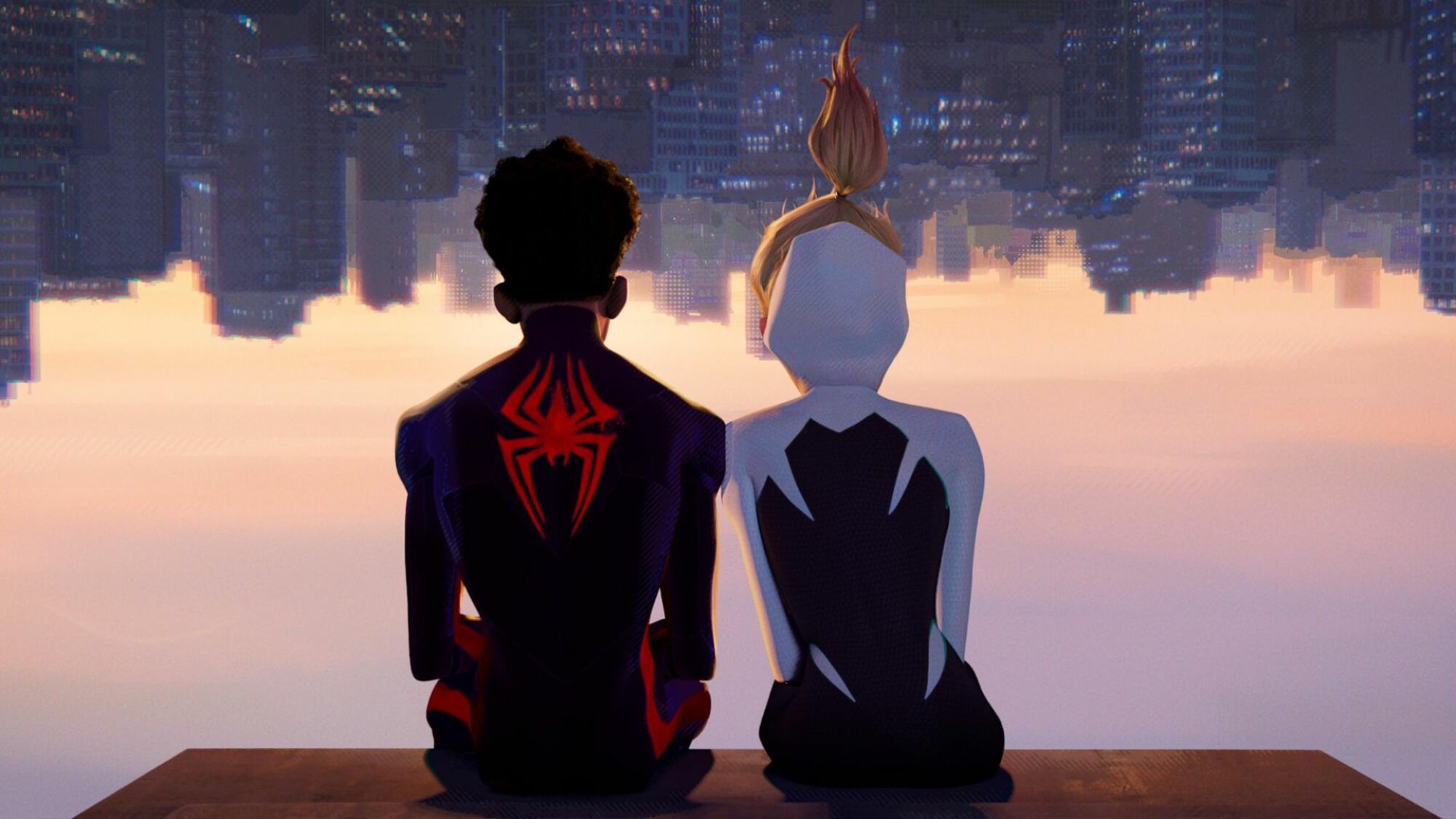
Hobie fills an Uncle Aaron-shaped hole in Miles’s life, metaphorically and literally. Hobie already knows about Miles’s unique powers upon meeting him. Like the one Black co-worker who’s been at the job long enough to quit code-switching, Hobie’s the first to explain to Miles the truth about Spider Society. Hobie gives Miles enough information to make him question Spider-Man 2099’s true intentions. And when O’Hara imprisons Miles for not conforming to the rules, Hobie helps Miles escape. Plus, he gives his portal watch to Gwen to provide proper backup when Miles is in need.
Spider-Punk provides the kind of guidance only a chaotic uncle can. In Into The Spider-Verse, Miles’s idolization of his uncle led him to mimic the older man’s flirtation moves. In Across The Spider-Verse, he channels Hobie as he faces down Miguel. When the truth about Miles’s existence is revealed, Miles mimics Hobie’s (and Kaluuya’s) unimpressed side-eye and announces to Miguel mid-battle, “Nah. Imma do my own thing.” Which is the vibe Hobie has been projecting the entire movie.
A deep-cut comic reference emerges between Hobie and The Prowler.
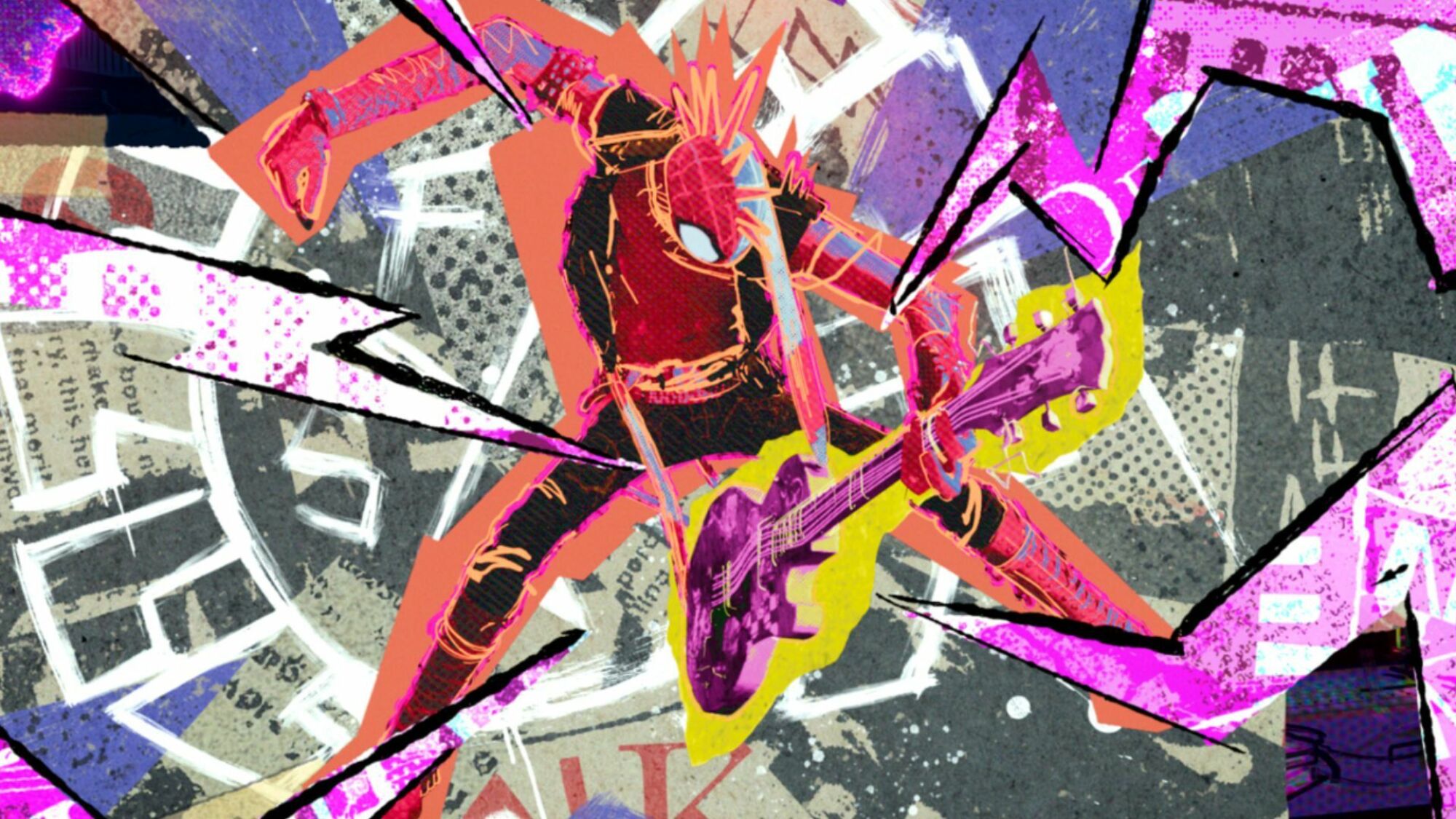
While some Spideys are taking Miles on a tour through their prison of villains who’d leapt into other universes, we find imprisoned the live-action version of Aaron Davis (Donald Glover reprising his Spider-Man Homecoming role) in his Prowler gear from Earth-199999. As Hobie walks by, he proudly announces that he was the one to put this Prowler away. (This is one of the best cameos of the movie, by the way). But there’s more to this brief bit.
Long before he was Spider-Punk, Hobart Brown’s first appearance in Marvel comics was in 1969’s The Amazing Spider-Man #78, where he took on the mantle of – wait for it – The Prowler. Notably, in that universe, Spider-Man convinces The Prowler to give up his life of crime. Could there be hope for live-action Uncle Aaron? Or could he at least return for Spider-Man 4?
Fight The Prowler!
Spider-Punk’s appearance in Spider-Man: Across the Spider-Verse is an upgrade to his comic book counterpart. Not only does the character honor his British punk roots and his spirit of anarchy, but he also gives us a different perspective from Spider-Woman (Issa Rae), who pretty much does everything by the book — O’Hara’s book, to be exact. However, by the end of the film, even her mind is changing on that matter.
If Miguel’s Spider-Man 2099 is considered Lawful Evil in Spider-Man: Across the Spider-Verse, then Spider-Punk is Chaotic Good. Hobie doesn’t want anarchy for anarchy’s sake. Instead, his goal is independent thought and freedom from the shackles of conformity. So, it makes sense for Spider-Punk to suit up with Gwen Stacy’s new team at the film’s cliffhanger climax, poised to rescue Miles. He’s exactly the kind of hero this movie — and Miles — needed.
I can’t wait to see what cunning chaos Hobie Brown will bring us in Spider-Man: Beyond the Spider-Verse next year.
Spider-Man: Across the Spider-Verse is now in theaters.
